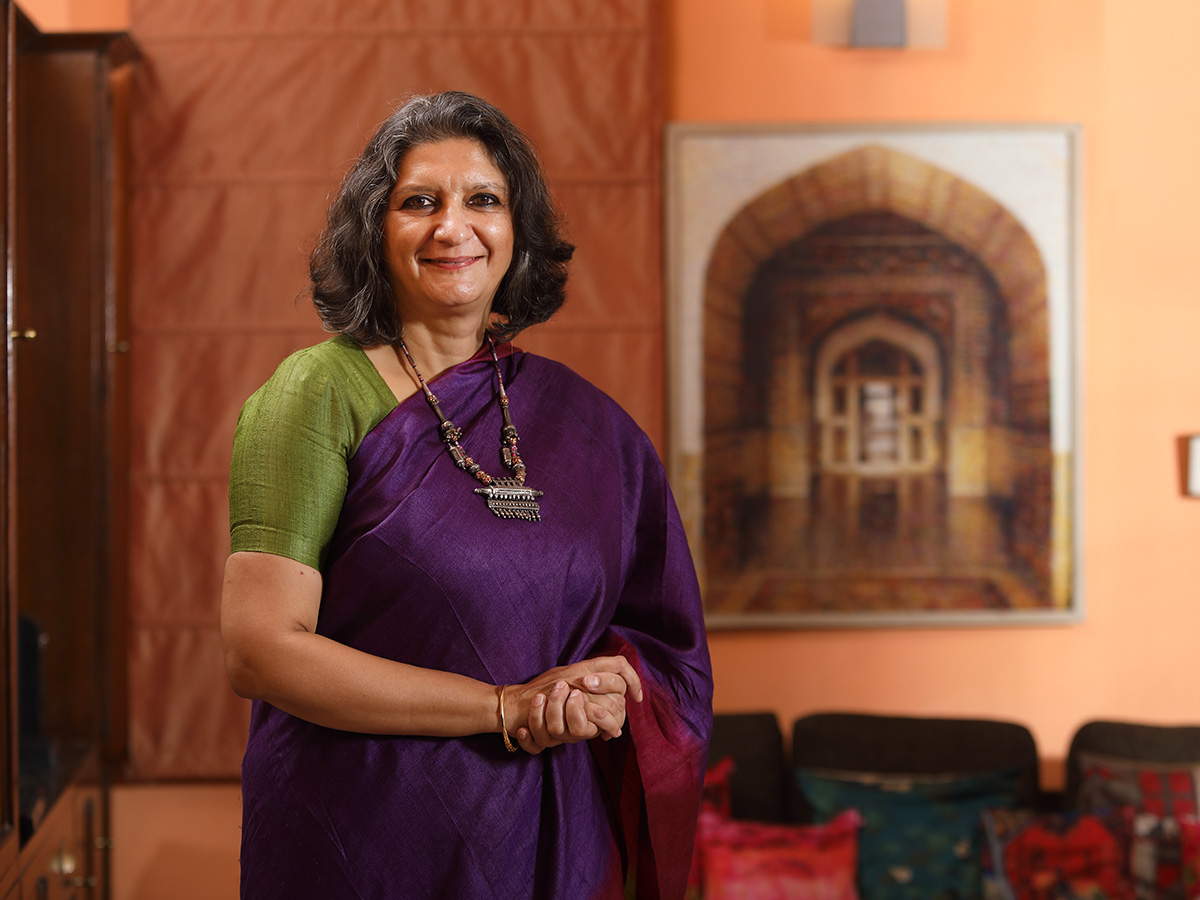The Infosys Prize 2018 for Humanities is awarded to the highly distinguished art historian, Kavita Singh, for her extraordinarily illuminating study of Mughal, Rajput and Deccan art as well as her insightful writing on the historical function and role of museums and their significance in the increasingly fraught and conflicted social world in which visual culture exists today.
Infographic:
Ways Of Seeing And Remembering
Scope and Impact of Work
Prof. Kavita Singh is a scholar of remarkable achievement, and has a vital and influential presence in the discipline of art-history in South Asia.
Her careful, sensitive and deeply instructive commentary and analysis of Mughal painting is revealing both of their historical and intellectual context as well as the diverse influences that they draw on, including both Persian and European, while her work on Rajput painting of the 18th century reveals its highly complex relation to its Mughal predecessors. When she moves her scholarly gaze to the Deccan, she illuminatingly integrates painting with other art forms, ranging from the illustration of manuscripts to the production of perfume.
Kavita Singh’s remarkable grasp of the museum’s evolving role in setting the canons for art-historical scholarship is indispensable reading for scholars and lay viewers alike. She extends these insights by broadening the focus to the museum’s significance for the social impact of art, and thereby relates visual culture to large contemporary questions of secularity, modernity, and political conflict, including the conflicts around repatriation that have been generated by a colonial past.
The influence of these contributions on her field has been enormous, shaping its intellectual contours, setting an exemplary standard for scholarship, and powerfully encouraging the young to pursue new directions of research.
Bio
Kavita Singh is Professor at the School of Arts and Aesthetics, Jawaharlal Nehru University. Prof. Singh received her BA (Hons), English Literature from Lady Shri Ram College (1985) and her MFA in Art History from M.S. University, Baroda in 1987. She received her Ph.D. in Art History from Punjab University, Chandigarh in 1996.
Singh has published several essays on secularism and religiosity, fraught national identities, and the memorialization of difficult histories as they relate to museums in South Asia and beyond. She has also published on aspects of Mughal and Rajput painting.
Volumes that she has edited and co-edited include New Insights into Sikh Art (Marg, 2003), Influx: Contemporary Art in Asia (Sage, 2013), No Touching, No Spitting, No Praying: The Museum in South Asia (Routledge, 2014) with Saloni Mathur, Nauras: The Many Arts of the Deccan (National Museum, 2015) with Preeti Bahadur Ramaswami, Museum Storage and Meaning: Tales from the Crypt (Routledge 2017, with Mirjam Brusius) and Scent Upon a Southern Breeze (Marg 2018)
Prof. Singh has curated exhibitions at the San Diego Museum of Art, the Devi Art Foundation, Jawaharlal Nehru University, and the National Museum of India.
Timeline
Jury Citation
Prof. Kavita Singh is one of the most distinguished and admired art historians in India today. Her reputation is founded on the width of her work, the depth of her knowledge, the sensibility that she brings to her analysis of art in India, and the shrewd and humane understanding she shows of the institutions of art - principally the museum.
The rich and complex body of work she has produced, combining close reading and analysis, scholarly heft, acute social investigation, and a genuinely humane temperament, is an achievement of a very high order which deserves recognition in the award of the Infosys Prize for the Humanities.
“As the chair of the jury for the Humanities award of the Infosys Foundation, it is a great privilege for me to have the opportunity of congratulating Professor Kavita Singh for her extraordinarily creative work on art history and visual culture which has had such a profound impact on the subject and for which the Infosys jury has had the honour to select her as the winner.”




